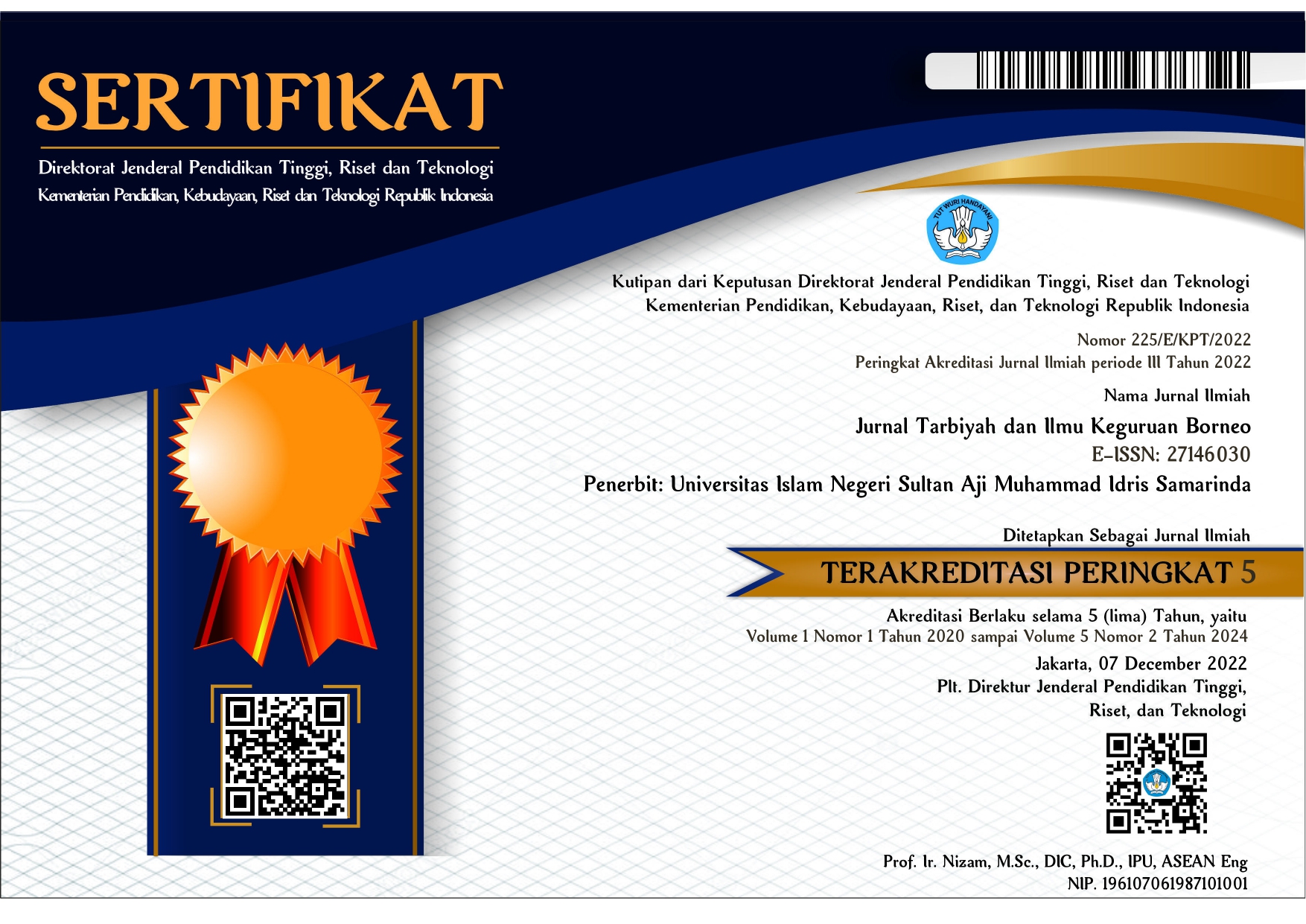Efektivitas Model Pembelajaran Role Model dalam Meningkatkan Hasil Belajar Siswa pada Kelas IV di SD IT Insan Karim Samarinda Seberang
Abstract
This research begins with the results of an initial survey of researchers who observed during the teaching and learning process, the lecture method is still dominantly used by teachers, this method especially in Indonesian language lessons can make students in the learning process become less active and less optimal in student understanding. This can be seen from the results of learning and student test scores that are still below the Minimum Completion Criteria and sometimes students always ask the teacher for drama so that the lesson is more understanding. The purpose of the study was to determine the effectiveness of role playing models in improving student learning outcomes in Indonesian language lessons in class IV SDIT Insan Karim Samarinda Seberang. This research is a quantitative descriptive research with one group pretest posttest design research, data analysis using Wilcoxon test. The results obtained from this study are the mean pre-test of 81.8 (there are 3 out of 10 children who have not been completed), the mean post-test of 94.4 (all completed). Hypothesis test results have a significant value of 0.018 <0.05. Findings in the field that role playing learning models make students able to understand and remember the material being taught. Students deliver sentences that are easily understood by their friends, then students become active while the question and answer process takes place. The obstacle is that some groups that have not yet performed their drama, are not focused on watching the appearance of their friends who are performing.




.svg_2.png)















